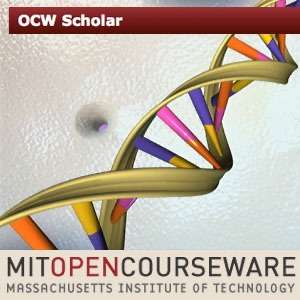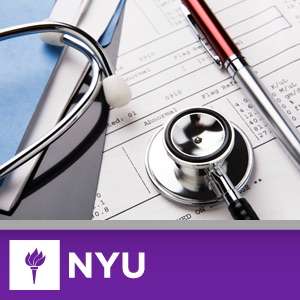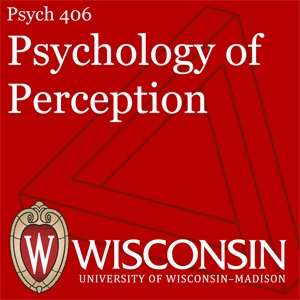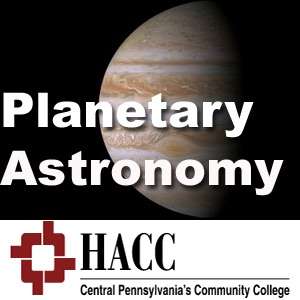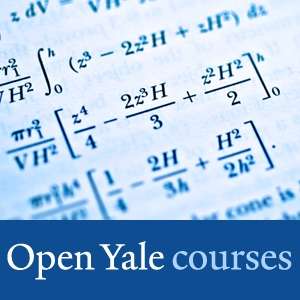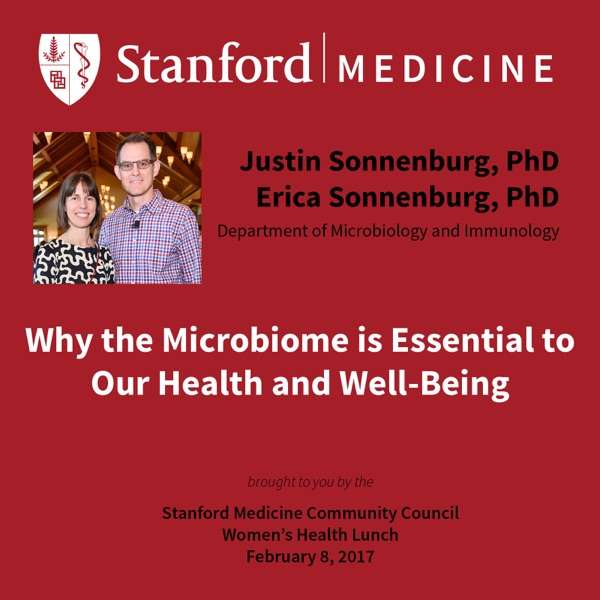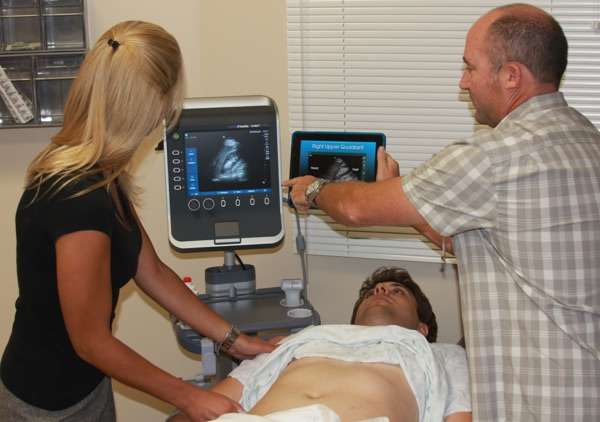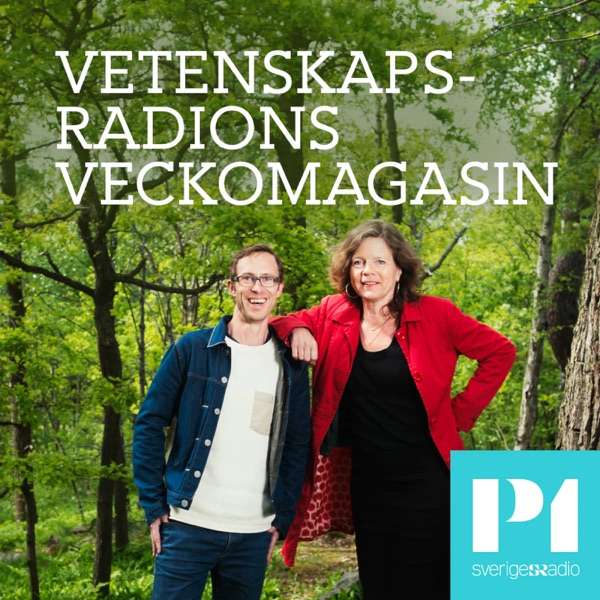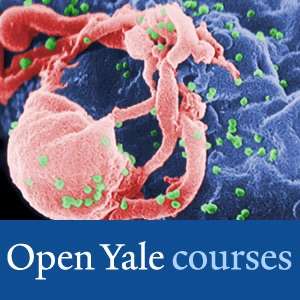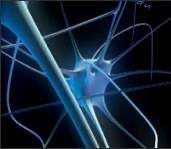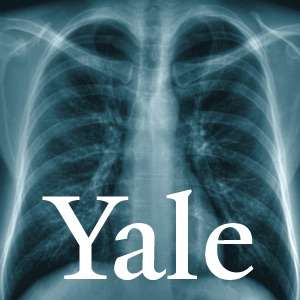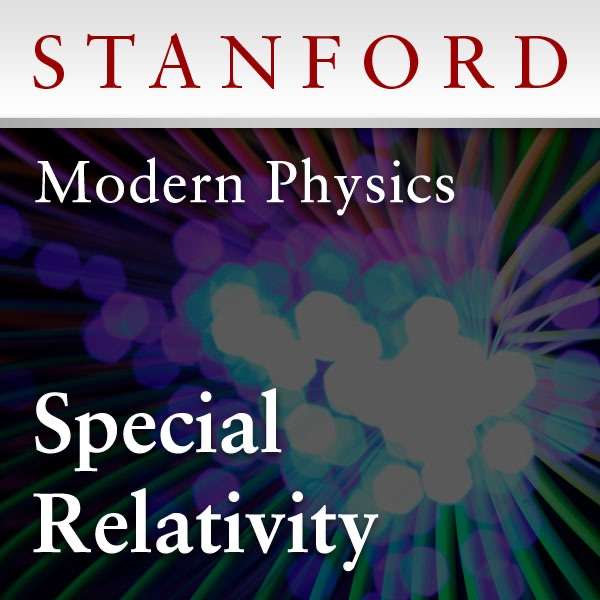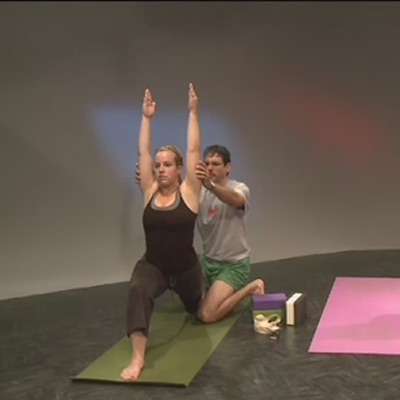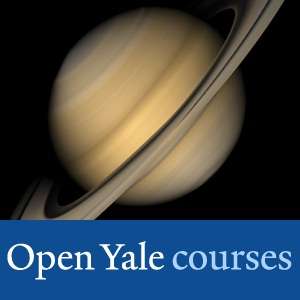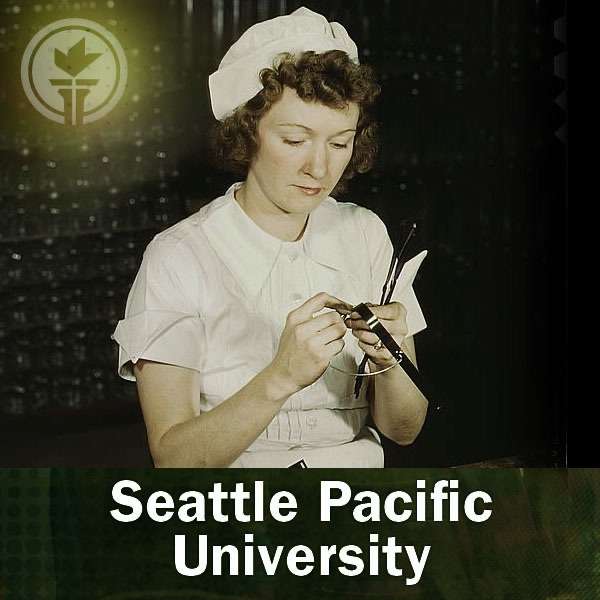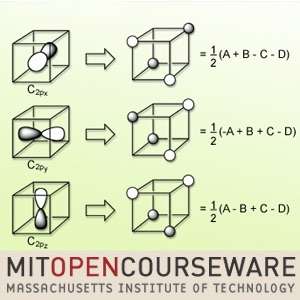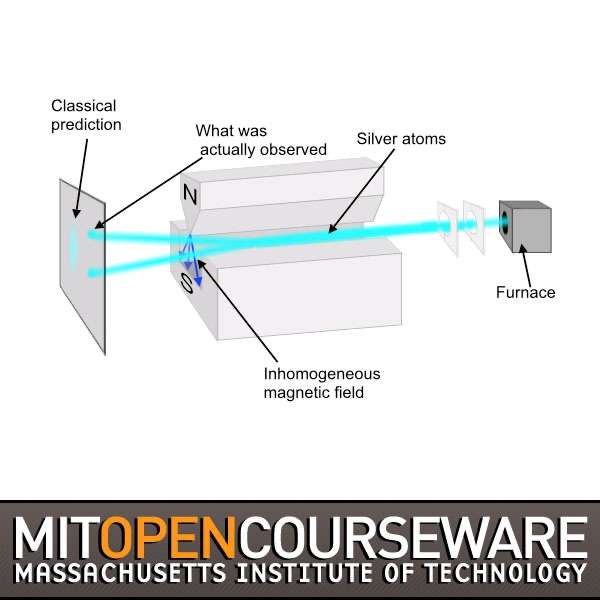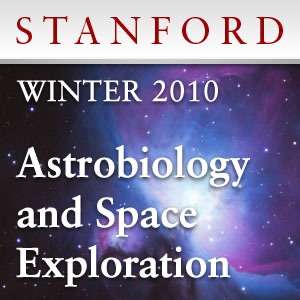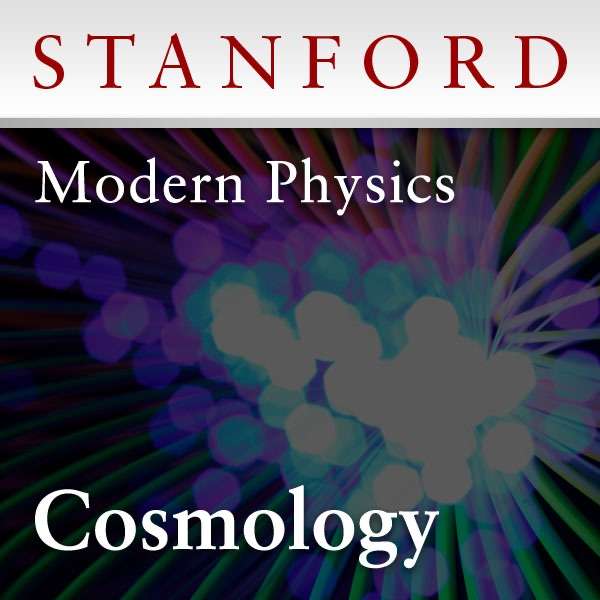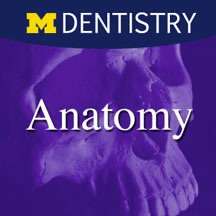Top Science & Medicine Podcasts
726
Science & Medicine
This collection contains clips from lecture videos of MIT's Introduction to Biology classes. Each video will show the instructor explaining a concept that is covered in the session of the Fundamentals of Biology. Read More
This collection contains clips from lecture videos of MIT’s Introduction t Read More
728
Science & Medicine
This course provides an introduction to the study of sensation and perception. Perception is the active process by which organisms extract information from their surroundings using the computational machinery housed in the brain, spinal cord, and peripheral nervous system. Read More
This course provides an introduction to the study of sensation and perception. P Read More
729
Science & Medicine
An introduction to the solar system with an emphasis on the sun, major and minor planets, the earth-moon system, asteroids, comets, meteors, etc.; a study of the physical laws of motion and the properties of light. Course work includes instruction in the use of astronomical instruments; some planetarium shows, along with laboratory exercises, are an important part of this course.
These are mainly pre-recorded lectures in MP3 format for students to review for the class. There will also be some video clips with live lectures to follow. Read More
An introduction to the solar system with an emphasis on the sun, major and minor Read More
730
Science & Medicine
(PHYS 200) This course provides a thorough introduction to the principles and methods of physics for students who have good preparation in physics and mathematics. Emphasis is placed on problem solving and quantitative reasoning. This course covers Newtonian mechanics, special relativity, gravitation, thermodynamics, and waves.
This class was recorded in Fall 2006. Read More
(PHYS 200) This course provides a thorough introduction to the principles and me Read More
731
Science & Medicine
MIT World — A Primary Source of Great Ideas on the Web
Which ideas and innovations can change the world?
MIT World™ answers that question by publishing key presentations by the MIT faculty and guest speakers who are shaping the future. These free, on-demand videos, available 24/7 to viewers worldwide, reflect and extend MIT’s educational mission—to provide the best education in science, technology, and related fields—to engaged learners anytime, anywhere.
More a publication of thought leadership, and less a news site, MIT World aims to capture the pulse and excitement of the range of ideas discussed at MIT every day and share them with the world. A growing archive offers insights on topics ranging from architecture to innovation to technology and sustainability. Cumulatively, these presentations by world-class thinkers and doers map great ideas in the making. Read More
MIT World — A Primary Source of Great Ideas on the Web Which ideas and innovat Read More
732
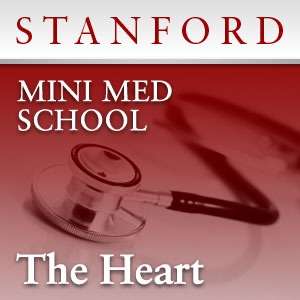
Science & Medicine
This course is a single-quarter, focused follow-up to the yearlong Mini Med School course sequence offered in 2009–10 by Stanford Continuing Studies and the Stanford Medical School. The course focuses on diseases of the heart and cardiovascular system, the leading cause of death and disability for both men and women as well as the most common cause of serious birth defects. Addressing these challenges, the Stanford Cardiovascular Institute catalyzes a unique collaboration among clinicians, translational and basic scientists, and engineers, fostering the development of novel approaches to diagnosing, treating, and ultimately preventing cardiovascular disease.
Featuring a dozen distinguished faculty from Stanford’s Cardiovascular Institute, this course offers students a dynamic introduction to the world of cardiovascular biology, health and disease, and the groundbreaking changes taking place in medical research right here at Stanford.
The course begins with an overview of how the cardiovascular system works, setting the stage for more in-depth talks by experts on topics such as: how heart disease affects men, women, and children; the role genes play in cardiovascular disease; how we can mend a broken heart through new surgical approaches, technologies, and bioengineering (including stem cells); the cardiovascular risks and benefits associated with performance athletics; new innovations in heart imaging; and more. Read More
This course is a single-quarter, focused follow-up to the yearlong Mini Med Scho Read More
734
Science & Medicine
These lectures comprise the bedside ultrasound curriculum from the perspective of emergency medicine.
These lectures comprise the bedside ultrasound curriculum from the perspective o Read More
735
Vetenskapsradions veckomagasin sänder inte längre nya avsnitt. Lyssna på Vete Read More
736
Science & Medicine
This course consists of an international analysis of the impact of epidemic diseases on western society and culture from the bubonic plague to HIV/AIDS and the recent experience of SARS and swine flu. Leading themes include: infectious disease and its impact on society; the development of public health measures; the role of medical ethics; the genre of plague literature; the social reactions of mass hysteria and violence; the rise of the germ theory of disease; the development of tropical medicine; a comparison of the social, cultural, and historical impact of major infectious diseases; and the issue of emerging and re-emerging diseases. Read More
This course consists of an international analysis of the impact of epidemic dise Read More
737
Science & Medicine
The Ask A Biologist program originates from the ASU School of Life Sciences. The host of the show is Dr. Biology (a. k. a. CJ Kazilek). Each episode revolves around an interview with a scientist(s) and their work in the life sciences. Students from preschool to high school and beyond will enjoy this show.
Companion program time logs and transcripts are available at the Ask A Biologist web site to help educators integrate content from each episode into the classroom. Teachers and parents of younger students may want to use the logs and transcripts to preselect segments of content from each episode for their students. Read More
The Ask A Biologist program originates from the ASU School of Life Sciences. The Read More
738
Science & Medicine
This course includes the theories and etiology of abnormal behavior and its social significance. Students will understand how symptoms relate to disorders, the techniques for treating those disorders and theories on the causes of those disorders. This is a Core B course.
The podcasts are pre-recorded topics to supplement information provided by your text, the publisher's website and Faces Interactive. The podcasts are focused on those topics that tend to be confusing or difficult for most students.
If you have comments or suggestions, please forward them to DMEDMOND@HACC.EDU Read More
This course includes the theories and etiology of abnormal behavior and its soci Read More
739
Science & Medicine
A graduate course in neuroethics, intended for neuroscience graduate
students, being developed and offered with support from the NSF. It includes a
combination of traditional classroom lectures, discussion and debates, as well as an
online component coordinated with a course at Wisconsin's Neuroscience and Public
Policy graduate program.
In brief, this is the rationale: Neuroscience is increasingly affecting all aspects of human life, from the relatively familiar medical applications in neurology and psychiatry, to new applications in education, business, law and the military. Today's neuroscience graduate students will be among the scientists, citizens and policymakers who will lead society through the maze of decisions regarding the appropriate uses of neuroscience.
This course provides a survey of the key ethical, legal and social issues at the
intersection of neuroscience and society. Read More
A graduate course in neuroethics, intended for neuroscience graduate students, b Read More
740
Science & Medicine
This collection features interviews and talks with Yale Faculty and researchers on the topic of Immunology.
This collection features interviews and talks with Yale Faculty and researchers Read More
741
Science & Medicine
In 1905, while only twenty-six years old, Albert Einstein published “On the Electrodynamics of Moving Bodies” and effectively extended classical laws of relativity to all laws of physics, even electrodynamics. In this course, Professor Susskind takes a close look at the special theory of relativity and also at classical field theory. Concepts addressed here includes space-time and four-dimensional space-time, electromagnetic fields and their application to Maxwell’s equations. He also covers the work of the German mathematician Hermann Minkowski. Read More
In 1905, while only twenty-six years old, Albert Einstein published “On the El Read More
742
Science & Medicine
Several Community College of Philadelphia instructors lead a Yoga classes.
Several Community College of Philadelphia instructors lead a Yoga classes. Read More
743
Science & Medicine
(ASTR 160) This course focuses on three particularly interesting areas of astronomy that are advancing very rapidly: Extra-Solar Planets, Black Holes, and Dark Energy. Particular attention is paid to current projects that promise to improve our understanding significantly over the next few years. The course explores not just what is known, but what is currently not known, and how astronomers are going about trying to find out.
This course was recorded in Spring 2007. Read More
(ASTR 160) This course focuses on three particularly interesting areas of astron Read More
744
Science & Medicine
Autumn 2010. An introduction to nursing, covering basic nursing science concepts and an introduction to nursing assessment. The nursing assessment focus is on data collection and nursing diagnosis. Emphasis is with adults in long-term and community setting. Read More
Autumn 2010. An introduction to nursing, covering basic nursing science concepts Read More
745
Science & Medicine
5.112 is an introductory chemistry course for students with an unusually strong background in chemistry. Knowledge of calculus equivalent to 18.01 is recommended. Emphasis is on basic principles of atomic and molecular electronic structure, thermodynamics, acid-base and redox equilibria, chemical kinetics, and catalysis. The course also covers applications of basic principles to problems in metal coordination chemistry, organic chemistry, and biological chemistry. Read More
5.112 is an introductory chemistry course for students with an unusually strong Read More
746
Science & Medicine
The collection includes twenty six video lectures. Together, this course and 8.06 Quantum Physics III cover quantum physics with applications drawn from modern physics. Topics covered in this course include the general formalism of quantum mechanics, harmonic oscillator, quantum mechanics in three-dimensions, angular momentum, spin, and addition of angular momentum. Read More
The collection includes twenty six video lectures. Together, this course and 8.0 Read More
747
Science & Medicine
Families and Couples: Psychology M176: Professor Benjamin Karney lectures on families and couples. This course examines relationships and their connection to individual psychopathology, marital discord, and family disruption. Read More
Families and Couples: Psychology M176: Professor Benjamin Karney lectures on fam Read More
748
Science & Medicine
Astrobiology asks: Where do we come from? Are we alone? Where are we going?
This course gives an overview of the excitement of astrobiology and space exploration, from the origin of our own biofriendly universe to questions of the future of mankind both on Earth and beyond. Read More
Astrobiology asks: Where do we come from? Are we alone? Where are we going? This Read More
749
Science & Medicine
The Winter 2013 quarter course of the Modern Physics series concentrates on cosmology, the science of the origin and development of the universe. Along the way, Professor Susskind takes a close look at the Big Bang, the geometry of space-time, inflationary cosmology, cosmic microwave background, dark matter, dark energy, the anthropic principle, and the string theory landscape. To appreciate the material covered in this course, students should understand basic calculus and algebra. Read More
The Winter 2013 quarter course of the Modern Physics series concentrates on cosm Read More
750
Science & Medicine
Originally recorded in the late '70s and early '80s, these anatomy videos present timeless information about teeth, gums, and other oral anatomy. Read More
Originally recorded in the late ’70s and early ’80s, these anatomy v Read More

 Our TOPPODCAST Picks
Our TOPPODCAST Picks  Stay Connected
Stay Connected